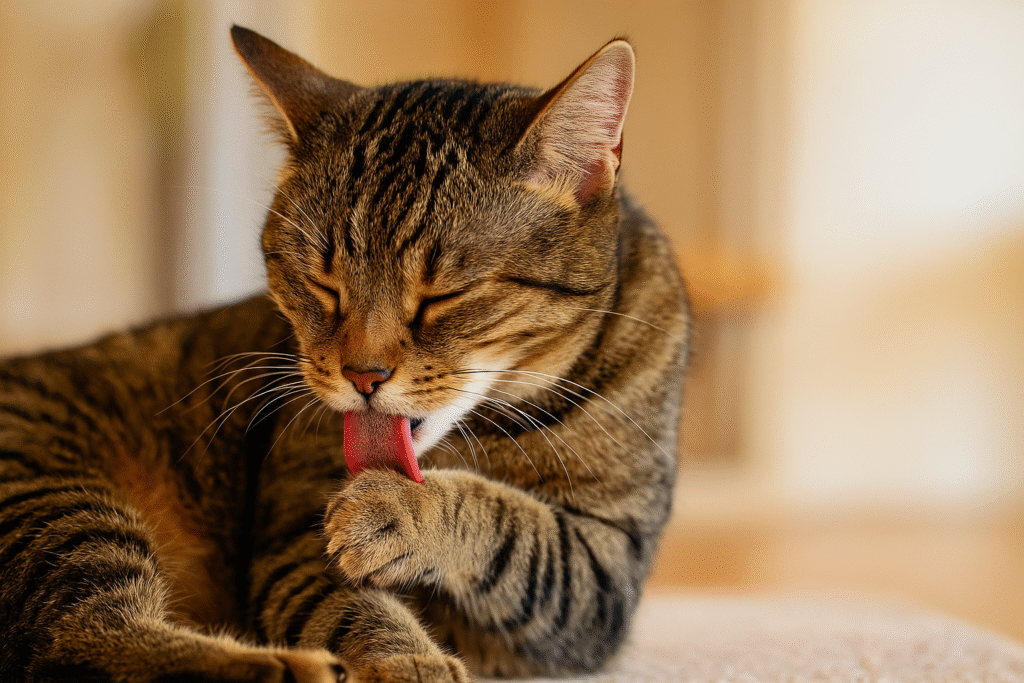Understanding Cat Hairballs
Cats are meticulous groomers. Their tongues are covered with tiny, hook-like structures that help remove loose fur. While this behavior keeps their coats clean, it also means they ingest a lot of hair. Normally, this hair passes through the digestive tract without issues, but sometimes it clumps together in the stomach and is eventually regurgitated as a hairball.
Although occasional hairballs are normal, frequent hairballs can indicate an underlying health concern. Understanding why cats get them and how to manage them effectively is essential for keeping your feline healthy.

Why Do Cats Get Hairballs?
1. Grooming Habits
Long-haired cats like Persians and Maine Coons are more prone to hairballs due to the sheer volume of fur they ingest while grooming.
2. Shedding Cycles
Cats shed more heavily during seasonal changes, which increases the amount of fur swallowed during grooming.
3. Digestive Health
Cats with slower digestion may struggle to move ingested fur through their systems, causing hairballs to form more frequently.
Effective Remedies for Cat Hairballs
1. Regular Grooming
One of the most effective ways to prevent hairballs is to brush your cat frequently. Regular grooming removes loose fur before your cat swallows it. For long-haired breeds, daily brushing is recommended.
2. Specialized Cat Food
Many pet food companies offer hairball-control formulas that are high in fiber. This fiber helps move hair through the digestive system more efficiently.
3. Natural Remedies
Safe home remedies can support your cat’s digestion. A small amount of pumpkin puree, olive oil, or a veterinarian-approved hairball gel can help lubricate the digestive tract and prevent blockages.
4. Hydration
고양이에게 수분을 충분히 공급하는 것은 매우 중요합니다. 고양이는 필요량보다 물을 적게 마시는 경우가 많아 소화가 더딜 수 있습니다. 습식 사료를 추가하거나 반려동물용 분수를 사용하여 물을 마시도록 유도하는 것도 좋은 방법입니다.

When Hairballs Become a Problem
While occasional hairballs are normal, you should consult a veterinarian if your cat shows the following symptoms:
- Frequent vomiting or gagging without producing a hairball
- Loss of appetite or weight loss
- Constipation or lethargy
- Signs of abdominal pain
These could indicate a blockage in the digestive tract, which requires immediate veterinary attention.
Preventive Lifestyle Tips
Encourage Play and Activity
Active cats have healthier digestion. Interactive play sessions with toys help stimulate their digestive systems and reduce hairball risk.
Regular Vet Visits
Annual checkups help detect early signs of digestive problems, shedding issues, or skin conditions that may contribute to excessive grooming.
Related Articles
Conclusion
Hairballs are a natural byproduct of a cat’s grooming routine, but they don’t have to become a serious issue. With proper grooming, dietary adjustments, and preventive care, you can minimize the occurrence of hairballs and keep your cat comfortable and healthy. Always pay attention to changes in your cat’s habits and consult your veterinarian when necessary.


핑백: Siamese Cats: Personality Traits, Care Tips & Common Health Issues - Happy Paws Guide